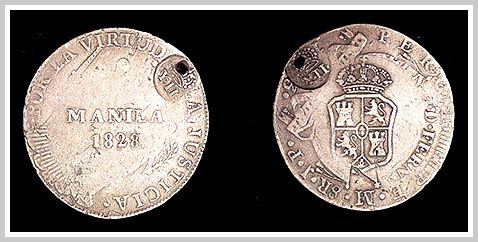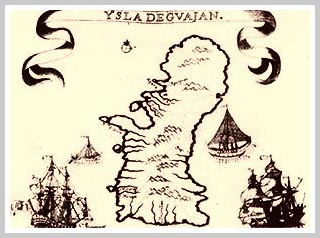| By the start
of the 19th century, the economy of Spain and her overseas empire was in
shambles. The last galleon had sailed in 1815 and was fast being replaced
by commercial shipping. Furthermore, Spain's American colonies were in
revolt, setting np their own revolutionary mints and producing coins emblazoned
with their own nationalistic slogans which found their way to the Philippines.
Royalist efforts to prevent the revolutionary fever from spreading to the
Philippines gave birth to edicts that would require government counterstamps
to obliterate revolutionary inscriptions and revalidate these rebel coins.
The MANILA counterstamps were prescribed by order dated October 13, 1828,
soon to be followed by those of King Fernando VII (F7) and Queen Isabel
II (Yll).
The story of
the F7 and Yll counterstamps is a tale of the triumph of culture over law.
In 1834 Governor - General Don Pascual Enrile ordered that all coins
with holes (i.e. Mutilated) would no longer be considered legal tender.
This well-meaning act quickly turned out to be bad law as it effectively
withdrew from circulation many coins bearing holes not as a result of fraud,
but of some local customs. These included coins used as arras which were
perforated and tied together to prevent bad luck from visiting some nervous
bridegroom who should happen to drop them; coins which doubled as jewelry
and those which were simply strung together to prevent them from getting
lost or misplaced. Upon realizing the possible adverse effects of the decree,
the Governor General immediately issued an amendment, once again
legalizing holed coins by requiring them to be counterstamped OVER THE
HOLES, thereby causing, by legal fiction, these holes to "disappear".
One very unusual
example of such a coin is die MANILA 1828 counterstamped on an 8 R Lima
1823 JP with Yll counterstamps on both sides of the hole. An EXTREMELY
RARE TRIPLE counterstamp combination. Mintage unknown. (Philippine collection) |



